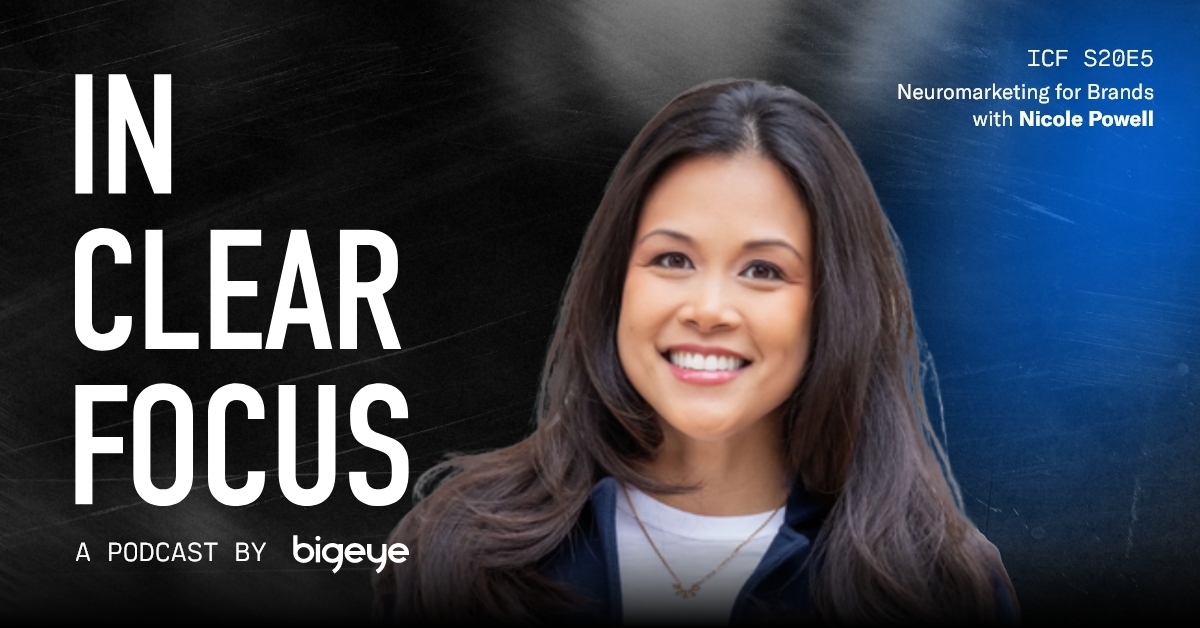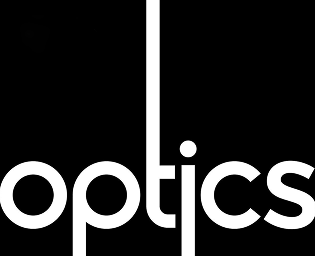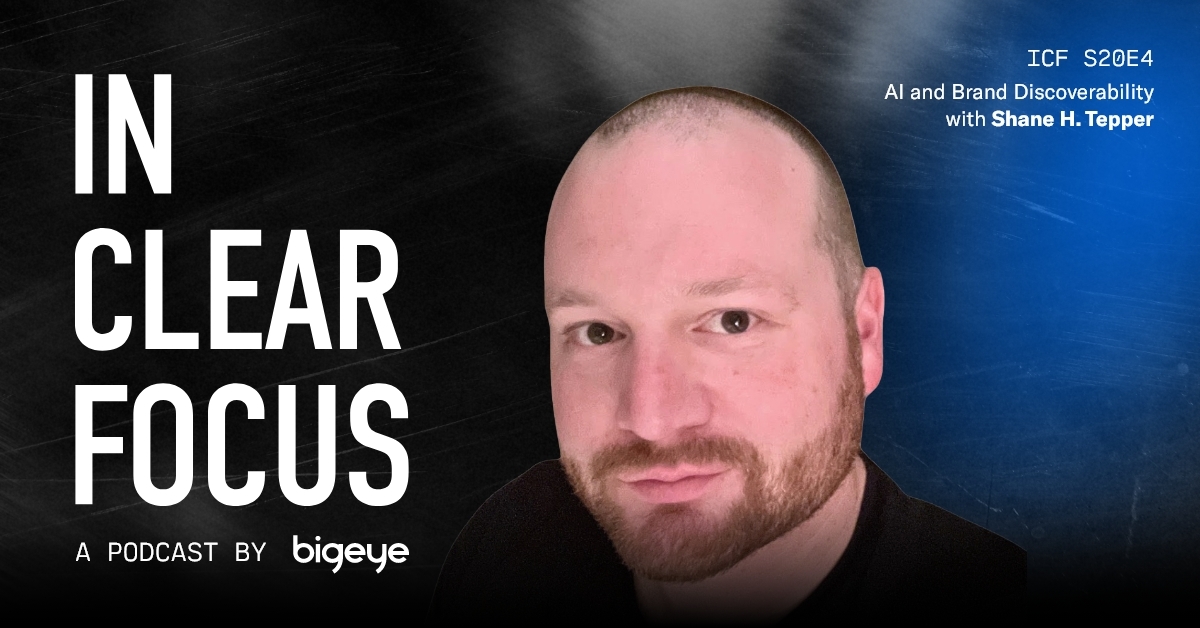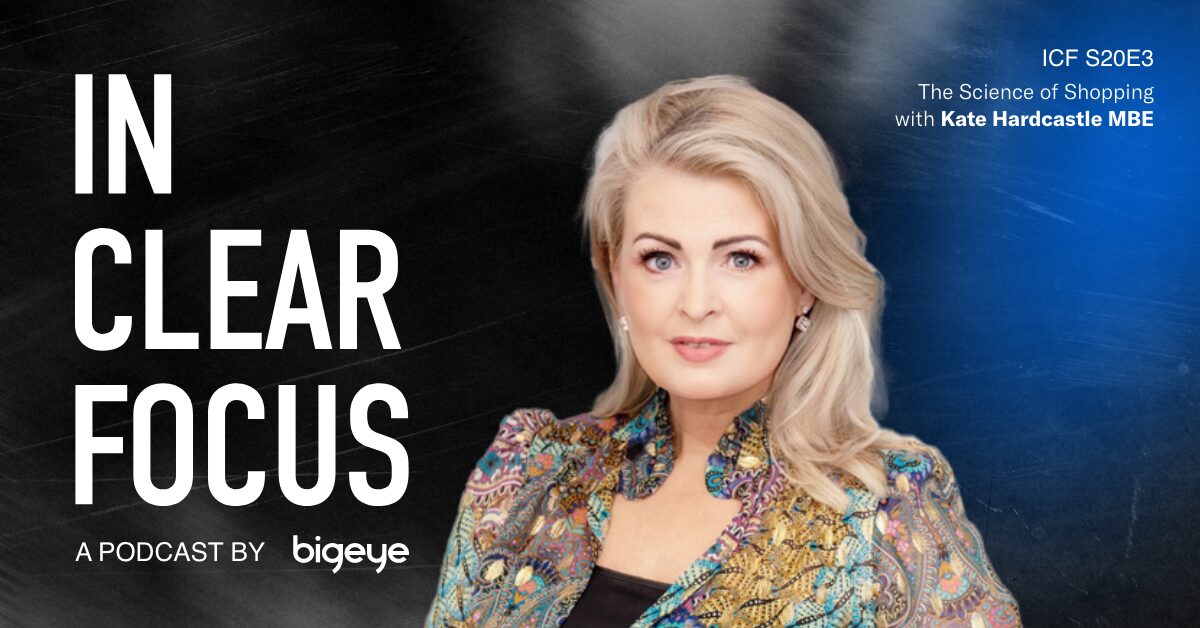IN CLEAR FOCUS: Nicole Powell, founder of Halcon Marketing Solutions, reveals how neuromarketing uncovers the subconscious drivers behind purchasing decisions. Nicole explains how to create “magnetic” brand messaging by focusing on emotion over logic. She contrasts neuromarketing with traditional research, discusses common marketing mistakes, and details the cyclical relationship between brand strategy and marketing tactics. Learn how to build a strategically relevant brand that resonates.
Episode Transcript
Adrian Tennant: Coming up in this episode of IN CLEAR FOCUS.
Nicole Powell: The brand strategy influences the marketing, but when you actually show it to your audience and you’re getting real-time insights and getting data from how marketing campaigns are working, what’s resonating, what’s not, it’s circular, right? It’s a cyclical process. That marketing is also influencing the brand strategy. So it’s not a static thing.Adrian Tennant: You’re listening to IN CLEAR FOCUS, fresh perspectives on marketing and advertising produced weekly by Bigeye, a strategy-led full-service creative agency growing brands for clients globally. Hello, I’m your host, Adrian Tennant, Bigeye’s Chief Strategy Officer. Thank you for joining us. In marketing, we often use the information that consumers provide through surveys and focus groups to inform our strategic decisions. But many of the fundamental drivers of purchasing decisions happen at a subconscious level that people can’t articulate. This is where neuromarketing comes in, a field that uses neuroscience to understand how the brain actually responds to marketing stimuli, uncovering insights that traditional self-reported research methods miss. Our guest today is an expert in this intersection of neuroscience and marketing. With over 16 years of experience working with brands like Disney, ESPN, and Fox Networks, Nicole Powell is the founder and CEO of Halcon Marketing Solutions. To discuss what she calls “magnetic brand messaging” that resonates at a subconscious level, I’m delighted that Nicole is joining us today from St. Louis, Missouri. Nicole, welcome to IN CLEAR FOCUS.
Nicole Powell: I love talking about marketing and the brain, so I’m so excited to be here talking to you today.
Adrian Tennant: Nicole, let’s start with your journey. You began your career wanting to be a television producer, but eventually pivoted to marketing. What sparked that transition?
Nicole Powell: So ever since I was a little kid, I loved to talk. I loved to tell stories. So that’s kind of how I first started in television, right? It’s a great medium to tell stories. But during an award show that I was working on, we actually had a client, an advertiser, and we had to produce, you know, a sponsored segment for this advertiser. And I remember receiving this massive brand book, and there were about three or four folks on site essentially telling us what to do, what to say, how to prop the product, how to do this, how to do that. And it was all coming from this work that they did in the brand book. So obviously I love being creative, whether it’s television, writing, whatever medium, but I was fascinated by that idea that, you know, I was creating these pieces of content from this master kind of brand book, right? And all these individuals spent all their time working on it. And it really inspired me to want to be the creator of said brand messaging and brand strategy, versus the person executing the content. So that’s really how I transitioned from working in television to really focusing on the marketing side of things.
Adrian Tennant: Now, you’ve worked with major media companies like Disney, ESPN, and Fox Networks. How did that experience shape your approach to marketing?
Nicole Powell: Honestly, it kind of circles back to that first experience that I mentioned at that award show. I think there’s this misconception, I guess, that marketing is just, you know, what you see on a flyer or what you see on an ad. But before that even gets created, there’s so much work, research, analysis, interviews, back and forth meetings to even come up with something that inspires these marketing assets and this marketing collateral, right? And I think that’s the big learning that I got working at these large national global organizations, is they invest not just time but an immense amount of money in really understanding who their audience is. who their customers and clients are before they even go out and quote unquote, “do the thing and start designing and start writing.” There’s all of this work that is involved in just really understanding the mindset of the folks that they’re trying to win over as customers or clients.
Adrian Tennant: Well, after working with those industry giants, you founded Halcon Marketing Solutions. Nicole, what inspired you to start your own agency?
Nicole Powell: So I actually left the marketing world and started entry-level at a totally different industry. But in that environment, obviously, everyone heard that I had all of this marketing experience. So they’re starting to loop me in on these big construction projects and grand openings that they were working on. And I gladly accepted because I love working that muscle, I guess. And in that environment, I was really exposed to a different kind of client. Up till that point, I was working with these big brands, you know, far removed from the CEOs, from the founders. But in these particular scenarios, I was working with, you know, local businesses, the GM or the CEO, CMO of a company. So there was that direct access. And I realized that I loved that. I really enjoyed feeling like the work that I was doing, the conceptualizing and the execution, was moving the needle, and that I could actually see it. I had access to these internal stakeholders. So I decided that upon also understanding some of the gaps and what was missing in what was currently going on in internal marketing teams or at these businesses, was that there was a disconnect between what brand branding, brand strategy is, what marketing is, and how to reach and resonate with your target consumer. So I really wanted to create an agency really focused on that small to mid-sized business, where I’m taking all of these insights, all of the kind of quote-unquote “best practices” of working with these large corporations and making it accessible. So making these high-level brand and marketing strategies accessible to that small business owner. And I’m sure we’ll talk about networking in a little bit, but I just feel like these other insights and this research is just underutilized outside of large corporations, and I wanted to make that available.
Adrian Tennant: Well, you have differentiated your agency through the use of neuromarketing, and I provided a brief description in the introduction, but could you explain what neuromarketing is and why it’s important?
Nicole Powell: I am fascinated with neuromarketing because it’s essentially the mix of neuroscience, obviously marketing, psychology, behavioral economics. It’s all rolled into one, but it’s really the study of how our brain responds to, in this particular case, marketing stimuli. And it’s understanding the subconscious, why we make the decisions that we make, and most of which we aren’t fully aware of. When I started on this journey, it was really important to me to look into a variety of different disciplines, a variety of different ways to analyze audiences, you know, not just leaning on one methodology. So with neuromarketing, I’m able to just understand those triggers. What are those things that we see and that we hear that’s going to push us or urge us to make that decision, which to me is obviously really fascinating.
Adrian Tennant: Yeah. How does neuromarketing differ from traditional market research methods like surveys and focus groups?
Nicole Powell: Well, surveys and focus groups, they really lean more on self-reporting, right? So you ask individuals particular questions, you survey, and people give you answers. So, as we all know as humans, one day we’re in a good mood, the next day we’re in a bad mood, and even one second our feelings and our attitudes can change. So what I found in kind of doing that mode of, you know, research is that it could be biased or incomplete because I like to say we humans lie and depending on the environment we’re in or our moods or the state we’re in, we might say one thing but actually do another. So I just want to preface that and say that I definitely find these modes of getting and gathering information really beneficial and we use them in a lot of our different projects. However, I think it’s also important to understand their limitations and look at other ways to gather insights and data about audiences to make the most informed decisions when it comes to messaging and campaigns. So with neuromarketing, it’s really analyzing those responses that we’re not consciously aware of. So you’re gathering what people are saying and then you can actually see based off of how the brain reacts to stimuli what the brain is pushing the person to do. So whether that’s eye tracking, brain waves, it’s really analyzing what people pay attention to. I look at a lot of different research studies and what I like to do is look at the insights, like what these very, very intelligent and talented researchers are doing out there and how do we apply it to real world marketing campaigns. So I kind of use this neuromarketing research, I don’t know, a nutritionist would, right? So there’s all these scientists conducting this research on food, nutrition, and the nutritionist takes a look at all of this information, data, and creates something custom and that works for clients. So I wanted to kind of preface that. I mean, it is a great love and joy of mine to be able to do these huge research studies on my own. But for now, I just love absorbing all of the information that all of these scientists out there are doing and making it applicable to our clients.
Adrian Tennant: How can you use neuromarketing to create what you call magnetic brand messaging? Nicole, can you walk us through how that works in practice?
Nicole Powell: Sure. So magnetic brand messaging is essentially messaging, in my opinion, that sticks. So at Kalkine, our tagline is be remembered because ultimately that is what every marketer’s dream is to create marketing that is remembered by our consumer or our clients. to a point where once they are given a problem or a situation where they need our product or service, we are the first person they recall. And in doing so, I think what’s really cool about our way is that we understand how to connect with audiences. So what are those emotional triggers that resonate with our clients’ audiences? And then we create messaging that aligns with those triggers. And we go really deep, you know, What are the things that our clients target audiences not saying out loud? What are the things that keep them up at night? What are those issues that bother them? And then we kind of look at our clients and what their unique value propositions can be, what their positioning statements are, and we go deep to really make our audience feel safe. And ultimately, at the end of the day, when our brains feel safe, we’re able to calmly receive information. And when we do that, then we’re enabling ourselves to remember all of the information that we’re adjusting. And that’s what magnetic brain messaging is.
Adrian Tennant: When we were preparing for this interview, you mentioned to me that many small to medium-sized businesses don’t fully understand brand strategy the way major corporations do. What’s the biggest gap you see?
Nicole Powell: So the biggest gap that I actually see is the confusion between what a logo is and what actual brand strategy and brand messaging is. I think there is this misconception, again, that when you say branding or brand strategy or brand messaging, that it’s all fluff. It’s all fluffy words that don’t mean anything. I think that’s so far from what’s true and what’s real and what will actually move the needle for businesses. A lot of my clients prior to working with us have this notion that as long as they have a color palette and fonts, that’s all they need. What they think differentiates their brand which is most of the time in their heads only it’s not written down anywhere is [the] be-all and end-all and what they think is essentially what their audiences think, and your perception is everything, and there’s that big gap that “Hey, what you think your business is in the minds of your audience actually is probably not true.” And that’s why we need to invest in strategies and research to really uncover what that brand perception is.
Adrian Tennant: Let’s take a short break. We’ll be right back after this message.
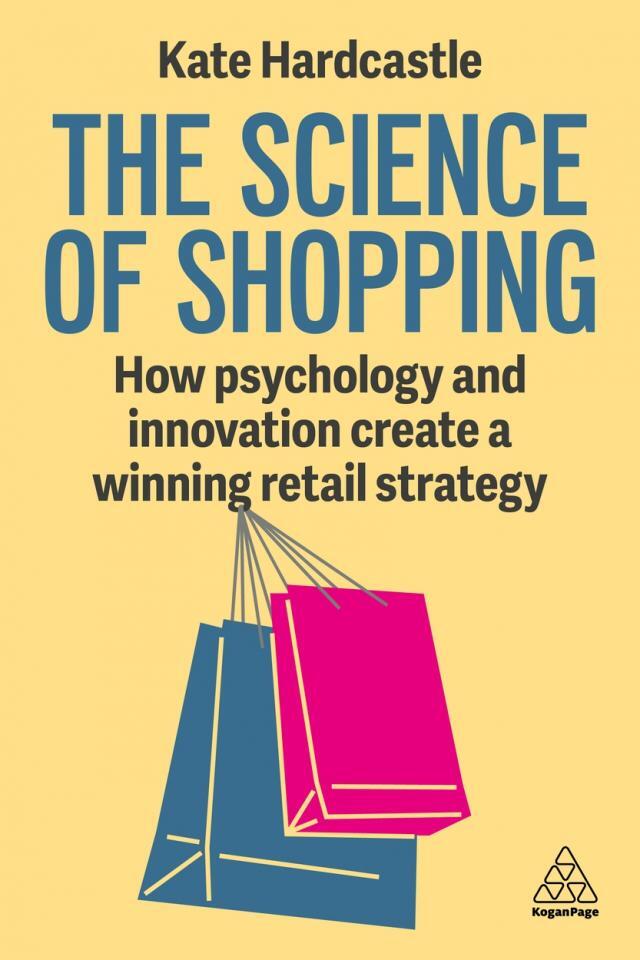 |
Kate Hardcastle MBE: Hi, I’m Kate Hardcastle, the author of The Science of Shopping: How Psychology and Innovation Create a Winning Retail Strategy, published by Kogan Page.
Drawing on nearly thirty years of experience working with brands such as Disney, Marks & Spencer, and American Express, I reveal how emotions, perceptions, and social factors influence consumer behavior in our evolving retail landscape. This book provides practical insights into everything from the psychology of pricing to creating immersive retail experiences that resonate with customers. You’ll discover real-world examples from leading companies and learn how to blend physical and digital elements to create memorable, value-driven shopping experiences. As an IN CLEAR FOCUS listener, you can save 25% on The Science of Shopping when you order directly from KoganPage.com. Just enter the exclusive promo code BIGEYE25 at checkout. Shipping is always complimentary for customers in the US and UK. I really hope my book helps you understand what motivates us as shoppers and how to develop effective retail strategies. Thank you! |
Adrian Tennant: Welcome back. I’m talking about neuromarketing and brand strategy with Nicole Powell, founder and CEO of Halcon Marketing Solutions. Nicole, of course, you work with many entrepreneurs and growing businesses. What’s the most common mistake you see them making with their marketing?
Nicole Powell: I think the most common mistake that a lot of folks make with their marketing is that execution is strategy. And what I mean by that is that pumping out 10 ads is a strategy, or thinking that I’m going to post about education, a personal story, or my favorite thing, which is a content strategy for your social media, is a marketing strategy. And there is this idea that those things will suffice when really what’s crucial is to create that overarching strategy to really understand how these different marketing tactics work together in order for you to meet your goal. I think there’s this reliance on, hey, everyone’s doing the newest trending app or the newest trending dance. So as long as I’m out there, and pumping out content and pumping out marketing assets, that’ll be enough. As long as I’m part of the quote-unquote noise, then I’m doing what I need to do to make my business stand out. But as I said earlier, it’s deeper than that. It’s more important to really understand the kind of messaging and what kind of messaging and how it looks will resonate with the audience that you’re trying to attract.
Adrian Tennant: You’ve talked a little bit about strategy and tactics. Going back to the neuromarketing component of this, when do you typically test marketing stimuli? Is it at the beginning of a project, midway through a project, at the end, or does it pulse throughout the entire engagement?
Nicole Powell: It actually pulses throughout. So we use neuromarketing during the brand strategy phase. So, for example, we have Amy Belfi, who is a neuroscientist. She’s a professor out in a university here in Missouri. She consults with me often. So when I’m crafting brand messaging or core messaging for a client, I usually have her review it. And she usually shares a bunch of research with me that I kind of reference. during that phase to understand what are some innate ways that we think and process information that could affect how we position the brand. But then once we actually create marketing collateral or campaigns to attract, then we can also dive into neuromarketing research to understand when somebody sees or hears the name of a business or a brand or a campaign, how the brain reacts. to this marketing asset that you’ve created. And that could also shape future marketing campaigns. It also could revise this brand strategy we created in the first place, right? Because we’re seeing it in real time and in action. So throughout this journey, nothing we do for brands is ever static. It’s always evolving and we tap into neuromarketing insights throughout the process.
Adrian Tennant: You grew up in the Philippines and New York. Nicole, how does your multicultural background shape your marketing approach?
Nicole Powell: My multicultural background has really shaped my marketing approach because I truly understand that we all have these innate biases. We all have these thoughts that we might not share outwardly or publicly, right, that really shape how we make decisions. So where I grew up and the experiences that I’ve had can influence why I would do one thing over another or choose one brand over another. Now, when it comes to the marketing realm, it’s really influenced how I’ve executed campaigns and tackled brand development because I understand that just because you have an identical business in one city or state, it doesn’t mean that you can just easily repurpose and do a cookie cutter strategy for a similar business in a totally different state and in a totally different city, let alone globally. Because I understand that the way the culture is and how we all think, even from, you know, having lived in New York and now living in the Midwest, we all think differently and we all process things differently based off of where we grew up and how we think. So it’s not as easy as. you know, replicating one strategy over and over again and repeating. It’s really critical to understand that unique audience, the unique competitors in that particular location in order for marketing to work. Additionally, because, you know, I’m an immigrant, I’ve lived in different areas, visited different areas of the world, I’m also able to really see things from multiple lenses. And I’d like to think I’m able to create culturally intelligent campaigns because not only have I done the research, but I’ve also lived it in some capacity and know my evolution as a human being, depending on where I’m from and what I’ve experienced. So I’m able to apply that understanding and empathy to all of the campaigns that we do.
Adrian Tennant: Are you seeing artificial intelligence and machine learning impacting neuromarketing research?
Nicole Powell: At the end of the day, I think any sort of technology and AI just makes it more accessible. I mean, I pick up my phone and I don’t even have to put in a passcode. It reads my face, right? So that is insane. And if you really think about it, part of neuromarketing research is understanding, you know, eyes, analyzing how we look at things, faces, voice, etc. So this new technology is making neuromarketing studies more accessible so that you don’t necessarily only have to lean on doing a big university study or having millions of dollars tied to a big global brand in order to conduct some of these experiments. So, I do think it’s making it accessible as just changing the world. I don’t even know what the world’s going to look like in a few years with all of this technology, but I’m here for it and I’m excited to see what happens.
Adrian Tennant: Well, as regular listeners know, we love case studies in ClearFocus. So, Nicole, I’m curious, what’s one insight that surprised you the most in your neuromarketing research?
Nicole Powell: So the one thing that’s really surprised me, and it was actually proven time and time again, but I’ll reference one particular instance, was the role of emotions over logic. I think this day and age, I feel like everyone just, if you’re emotional, you can’t do this, you can’t do that, don’t be emotional, be rational, be logical. But a lot of us, majority of us, we all make decisions based off of our emotions versus, you know, what’s quote unquote logical, especially when it comes to brands. And the agency had a client where they were investing so much money on advertising. They were doing this, that, and the other, just really talking about how great they were, what awards they had, how many reviews they had on all of their marketing, but it wasn’t converting. They weren’t. getting market share that they wanted and the mind share that they wanted. So we really took a deep dive, did qualitative, quantitative research, interviewed a bunch of people. We really wanted to get down and understand, and it was a medical field, so it was a little sensitive topic, really understand why their patients would go to them over their competitors. And originally they were hesitant and they were very skeptical. But once we actually delivered all of the research and insights and the final result, they felt a little better, but still a little skeptical. But then we started to infuse their marketing with the emotional messaging, not necessarily tied to success rates or numbers or all of this stuff, but more so honing in on who they were, those intangibles that we found existed. And I’m happy to say that they’re doing smashingly well, you know, in an environment where I think it’s very much saturated with the kind of business that they have. They’re really dominating and taking over, not just market share, but mind share. And I think that’s critical that when we’re triggering that part of the brain that’s tied to emotion and all of that jazz, it’s, it leads to that long term results that are clients want, which is to be remembered and to have brand advocates that really stand for their business and what they stand for.
Adrian Tennant: Positioning in the mind. I know you share my interest in encouraging young people to explore careers in marketing and advertising by participating in internship programs. Now, for someone who’s studying marketing or just starting their career, how do you explain the relationship between brand strategy and marketing tactics?
Nicole Powell: The relationship between brand strategy and tactics, I like to call it a very loving, happy marriage where they give back to each other on a daily basis. So I like to say that branding connects and marketing attracts. So the brand strategy is the why. It’s all of the meat, right? It’s those foundational pieces that make your brand different than the rest. So when we’re creating these things, whether it’s visuals and verbal identity of a brand, they obviously influence the marketing, which are all of the things that we present to our audiences. The fancy commercial, the awesome, you know, scroll stopping graphics. So those are the things that are attracting our audience. But at the end of the day, what will lead to those conversions and that long-term advocacy is the messaging, what goes behind the product and service, what you stand for. And ultimately, the brand strategy influences the marketing, but when you actually show it to your audience and you’re getting real-time insights and getting data from how marketing campaigns are working, what’s resonating, what’s not, It’s circular, right? It’s a cyclical process. That marketing is also influencing the brand strategy. So it’s not a static thing. As you get insights from your customers in real time, you can make adjustments to your core messaging, to your identity, to your visuals, your visual identity that will, again, influence the marketing. Then you get more data, which will influence the brand strategy. So it kind of goes round and round.
Adrian Tennant: For students or early career professionals interested in brand strategy, what skills should they focus on developing?
Nicole Powell: So I’ll kind of mention a practical skill and just a personality trait. So one is love of research analysis and investigating. I like to say I’m an investigator. I like to read between the lines of what a bunch of people are saying and really understand what’s behind all of those words. And secondly, the humility to be wrong. I think we all go into certain projects thinking, oh, this is definitely it. This is what’s going to work. This is how we position this business. I know it. But a lot of the times when you sit back and do that due diligence and work with the internal and external stakeholders, you find that your initial hypothesis is actually incorrect. and you should be okay with that. You should be flexible and willing to adjust based off of the actual insights that you’re gathering versus thinking your idea is the best idea and you’re not gonna budge even if the information that you’re being presented with proves otherwise.
Adrian Tennant: Excellent. Nicole, in your business, how do you help clients move beyond just being authentic to creating strategic brand positioning?
Nicole Powell: Authentic is such a word these days, isn’t it? So everyone says, I’m authentic, which is fantastic, which means you’re real, you show up as you are, etc, etc. But what I like to say about strategy and being strategic is you’re not just showing up as who you are, but you’re also being relevant. So I also like to say, you know, real brands set the trends versus just a business. And there’s nothing wrong with being a business, but if you’re a business that doesn’t necessarily invest in your brand strategy, you might just be following the trend. And I think it’s a similar kind of comparison being authentic versus being strategic. You know, you just don’t want to show up. You want to be remembered. You want to get people’s attention. So that’s what’s really critical. And I talked about it earlier as far as the mistakes that small to mid-sized businesses make. Just showing up isn’t enough. especially with the insane amount of competition out there in brick and mortars, in the digital space, all across the board. Just showing up and being present isn’t enough to grab your ideal client’s or customer’s attention. You also have to make yourself relevant. And you can’t make yourself relevant if you don’t understand the landscape and create a strategy that’s going to guide you as you navigate that landscape. A strategy is really tapping into a variety of different tactics and each has its own goal working together, which will help you reach your overarching goal. And that’s really critical when it comes to growing your business and scaling.
Adrian Tennant: Well said. Great conversation. If listeners would like to learn more about you and your work at Halcon Marketing Solutions, what’s the best way to do so?
Nicole Powell: The best way to get a hold of me and my lovely, wonderful team at Halcon is to check us out online at www.Halconmarketing.com. And also we are on Instagram @Halconmarketing. Of course, if you want to find me on LinkedIn, I’m Nicole Powell. I’m sure there’s lots of Nicole Powells in this world, but you’ll find that I’m the CEO of Halcon and we can connect and I’d love to talk to you.
Adrian Tennant: Perfect. Nicole, thank you very much for being our guest this week on IN CLEAR FOCUS.
Nicole Powell: Thank you so much, it was so much fun.
Adrian Tennant: Thanks again to my guest this week, Nicole Powell, founder and CEO of Halcon Marketing Solutions. As always, you’ll find a complete transcript of our conversation with timestamps and links to the resources we discussed on the IN CLEAR FOCUS page at Bigeyeagency.com, just select ‘Insights’ from the menu. Thank you for listening to IN CLEAR FOCUS, produced by Bigeye. I’ve been your host, Adrian Tennant. Until next week, goodbye.
TIMESTAMPS
00:00: The Circular Relationship of Brand Strategy and Marketing
00:27: Introduction to InClear Focus and Guest Introduction
01:20: Understanding Neuromarketing
02:10: Nicole’s Journey from Television to Marketing
03:29: Influence of Major Media Companies on Marketing Approach
04:46: Founding Halcon Marketing Solutions
05:58: Defining Neuromarketing and Its Importance
07:11: Neuromarketing vs. Traditional Market Research
08:20: Creating Magnetic Brand Messaging
10:50: The Gap in Brand Strategy Understanding for SMBs
12:34: Common Marketing Mistakes by Entrepreneurs
15:21: Testing Marketing Stimuli with Neuromarketing
18:33: Impact of Multicultural Background on Marketing Approach
20:40: AI and Machine Learning in Neuromarketing Research
21:52: Surprising Insights from Neuromarketing Research
24:10: Explaining Brand Strategy and Marketing Tactics to Students
26:24: Skills for Aspiring Brand Strategists
27:34: Moving Beyond Authenticity to Strategic Brand Positioning
29:23: Connecting with Nicole Powell and Halcon Marketing Solutions
29:59: Closing Remarks and Episode Wrap-Up
